Accelerate > Publications
Search this online library featuring the latest FAO publications, issue papers and briefs which offer up-to-date knowledge and innovative insights for SDG acceleration.

Water stress plugin for Water Evaluation and Planning system (WEAP): Using the water evaluation and planning tool for the calculation of Sustainable Development Goal indicator 6.4.2
2024
This report presents the instruction manual of the new water stress plugin developed by FAO in collaboration with the Stockholm Environment Institute's U.S. Center (SEI) for the calculation of the SDG indicator 6.4.2 “Level of water stress: freshwater withdrawal as a proportion of available freshwater resources” by river basin.
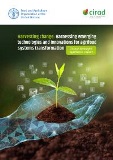
Harvesting change: Harnessing emerging technologies and innovations for agrifood system transformation - Global foresight synthesis report
2023
This study assesses a selection of technologies and innovations, which potentially could be of paramount importance in addressing agrifood challenges until 2050, as well as the most important trends and drivers that will influence the emergence of agrifood technologies and innovations and their triggers of change, including some regional aspects.
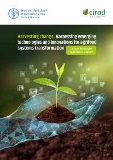
Harvesting change: Harnessing emerging technologies and innovations for agrifood system transformation
2023
The study assesses a selection of technologies and innovations, which potentially could be of paramount importance in addressing agrifood challenges until 2050, as well as the most important trends and drivers that will influence the emergence of agrifood technologies and innovations and their triggers of change, including some regional aspects. The goal is also to build plausible future scenarios for the evolvement of the emerging technologies and innovations in the future with the time...

Sustainable livestock transformation. A vision for FAO’s work on animal production and health
2023
Within the framework of the United Nations 2030 Agenda for Sustainable Development, FAO assists Member Nations to improve sound policies, increase investments and develop good practices in the livestock sector.
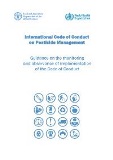
International Code of Conduct on Pesticide Management - Guidance on the monitoring and observance of implementation of the Code of Conduct
2023
The objective of this guidance on fulfilling the reporting requirements of Article 12 of the Code of Conduct is to obtain a regular flow of information on its observance to strengthen implementation of the Code, to provide data for its future revisions and improvement, and, most importantly, to improve the protection of human health and the environment related to pesticide use and management in agriculture and public health.
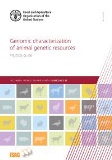
Genomic characterization of animal genetic resources - Practical guide
2023
Molecular biotechnologies have developed rapidly and substantially since the release of these previous guidelines. The livestock sector has been an active participant in the so-called “genomic revolution.” Advancements in the sequencing of genomes and related genotyping methods have created opportunities for gathering much more information on the molecular level than ever possible, at a faster rate, and for exponentially decreased costs.
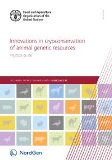
Innovations in cryoconservation of animal genetic resources - Practical guide
2023
The livestock sector faces a range of challenges, including climate change, emerging diseases, competition for natural resources and evolving demand for animal-source foods, which is increasing globally, especially in developing countries. Genetic diversity of livestock is a key resource for allowing livestock keepers to address these challenges, but this diversity has been in a state of decline...

Progress on the level of water stress. Global status and acceleration needs for SDG indicator 6.4.2, 2021
2023
The global indicator on water stress tracks the level of pressure that human activities exert over natural freshwater resources, indicating the environmental sustainability of the use of water resources. A high level of water stress has negative effects on social and economic development, increasing competition and potential conflict among users. This report is part of a series that tracks progress towards the various targets set out in SDG 6 using the SDG global indicators.
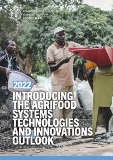
Introducing the Agrifood Systems Technologies and Innovations Outlook
2022
Agrifood system transformation to achieve the Sustainable Development Goals requires increased attention to developing, adapting and diffusing impactful science, technology and innovation (STI). Current levels and patterns of STI uptake are inadequate to facilitate needed agrifood system transformations, especially in today's low- and middle-income countries
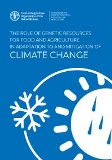
The role of genetic resources for food and agriculture in adaptation to and mitigation of climate change
2022
The main focus of this study is the state of current use of genetic resources in climate change adaptation and mitigation efforts. Each chapter explores the impacts of climate change on genetic resources and also considers the significance of genetic resources to climate change adaptation and mitigation.
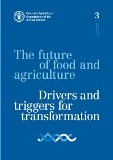
The future of food and agriculture – Drivers and triggers for transformation
2022
This report aims at inspiring strategic thinking and actions to transform agrifood systems towards a sustainable, resilient and inclusive future, by building on both previous reports in the same series as well as on a comprehensive corporate strategic foresight exercise that also nurtured FAO Strategic Framework 2022–31. It analyses major drivers of agrifood systems and explores how their trends could determine alternative futures of agrifood, socioeconomic and environmental systems.
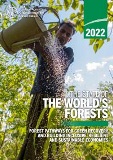
The State of the World’s Forests 2022 - Forest pathways for green recovery and building inclusive, resilient and sustainable economies
2022
Against the backdrop of the Glasgow Leaders’ Declaration on Forests and Land Use and the pledge of 140 countries to eliminate forest loss by 2030 and to support restoration and sustainable forestry, the 2022 edition of The State of the World’s Forests (SOFO) explores the potential of three forest pathways for achieving green recovery and tackling multidimensional planetary crises, including climate change and biodiversity loss...
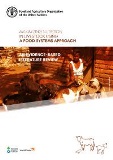
Maximizing nutrition in livestock using a food systems approach - An evidence-based literature review
2021
This literature review is one of a series of four sector-specific reviews aimed at informing the development of guidance notes for the integration of nutrition across the crops, fisheries and aquaculture, forestry and livestock sectors in 12 sub-Saharan African countries. The present literature review focuses on mainstreaming nutrition in the livestock sector using a food systems approach.
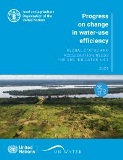
Progress on change in water-use efficiency - Global status and acceleration needs for SDG indicator 6.4.1, 2021
2021
The global indicator on water-use efficiency tracks to what extent a country’s economic growth is dependent on the use of water resources, and enables policy and decision-makers to target interventions at sectors with high water use and low levels of improved efficiency over time.

Maximizing nutrition in crop production using a food systems approach - An evidence-based literature review
2021
This literature review is one of a series of four sector-specific reviews aimed at informing the development of guidance notes for the integration of nutrition across the crops, fisheries, and aquaculture, forestry, and livestock sectors in 12 sub-Saharan African countries. The present literature review focuses on mainstreaming nutrition in the crops sector, using a food systems approach.

Sustainable management of freshwater resources for food and nutrition security in Small Island Developing States
2021
This study investigates how freshwater management can contribute to food and nutrition security (FNS) in Small Island Developing States (SIDS). It contributes to FAO’s Global Action Programme, which prioritises an integrated approach to freshwater management on FNS in SIDS.
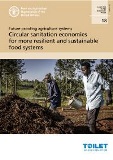
Future proofing agriculture systems - Circular sanitation economies for more resilient and sustainable food systems
2021
The Food and Agriculture Organizationof the United Nations (FAO) and the Toilet Board Coalition (TBC) have collaborated on this piece of work to shine a light on the benefits and rationale for agricultural systems, and the local and national contexts in which they operate, to champion circular sanitation economies and the products coming from them. This paper focuses on discussing the entry points of circular sanitation economies for the agriculture sector ...

How the world's food security depends on biodiversity
2020
As the world population continues to rise, new ways are needed to sustainably increase agricultural production, improve supply chains, reduce food losses and waste, and ensure access to nutritious food for all at all times. This brochure includes the contribution of genetic resources for food and agriculture to food security and to the achievement of relevant sustainable development goals.
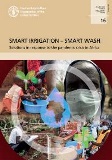
Smart irrigation – Smart wash: Solutions in response to the pandemic crisis in Africa
2020
Uncertainties related to the impacts of COVID-19 on daily life are increasingly growing. Inherent effects have grown beyond the well-defined sphere of health risks and have shocked the livelihood and food security in several countries. Particularly in the poorest countries, the impact is more devastating due to the limited availability of resources to slow down the spread of the disease. These countries require immediate actions to safeguard food security and human health.
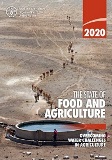
The State of Food and Agriculture 2020 - Overcoming water challenges in agriculture
2020
The State of Food and Agriculture 2020 presents new estimates on the pervasiveness of water scarcity in irrigated agriculture and of water shortages in rainfed agriculture, as well as on the number of people affected. It finds major differences across countries, and also substantial spatial variation within countries.
Browse by SDG
- SDG1: No Poverty
- SDG2: Zero Hunger
- SDG3: Good Health & Well-being
- SDG4: Quality Education
- SDG5: Gender Equality
- SDG6: Clean Water & Sanitation
- SDG7: Affordable and Clean Energy
- SDG8: Decent Work and Economic Growth
- SDG9: Industry, Innovation and Infrastructure
- SDG10: Reduced Inequalities
- SDG11: Sustainable Cities and Communities
- SDG12: Responsible Consumption and Production
- SDG13: Climate Action
- SDG14: Life Below Water
- SDG15: Life on Land
- SDG16: Peace, Justice and Strong Institutions
- SDG17: Partnerships for the Goals
Browse by Better
Browse by Priority Area
- Innovation for Sustainable Agriculture Production
- Blue Transformation
- One Health
- Small-Scale Producers' Equitable Access to Resources
- Digital Agriculture
- Healthy Diets for All
- Nutrition for the Most Vulnerable
- Safe Food for Everyone
- Reducing Food Loss and Waste
- Transparent Markets and Trade
- Climate Change Mitigating and Adapted Agrifood Systems
- Bioeconomy for Sustainable Food and Agriculture
- Biodiversity and Ecosystem Services for Food and Agriculture
- Achieving Sustainable Urban Food Systems
- Gender Equality and Rural Women's Empowerment
- Inclusive Rural Transformation
- Agriculture and Food Emergencies
- Resilient Agrifood Systems
- Hand-in-Hand Initiative
- Scaling up Investment
